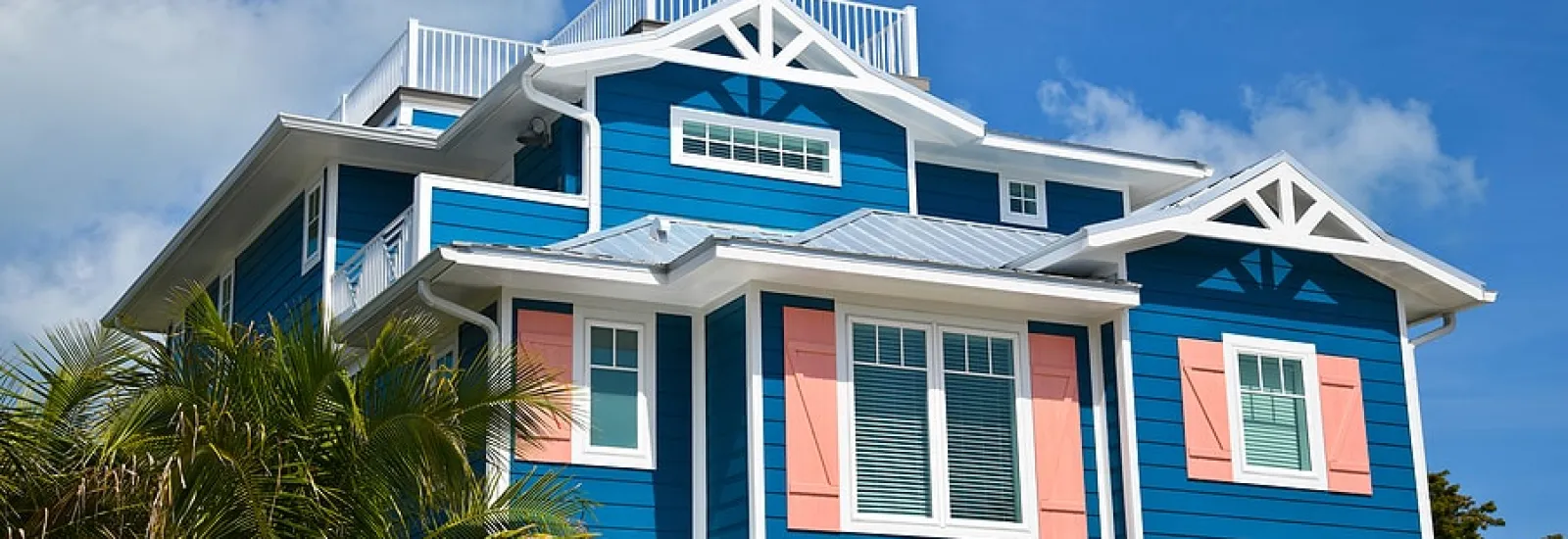Florida has beautiful, white sandy beaches, year-round sunshine and delicious oranges; however, our state also has category five hurricanes and other natural disasters. Many homes in Florida are on the coast, subjecting their roofs to extreme heat, humidity and wind. For this reason, beach house roofs in Florida need to be especially resilient.
Factors to Think About
You may be wondering, "What is the most durable roof type for a coastal home?" There are pros and cons to each roofing material, so how do you choose the best roofs for beach houses? While appearance is important, avoid making your decision based solely on the look of the tiles and material. Instead, ask yourself the following when considering if clay, concrete or metal is the best roofing material for your coastal home in Florida:
Florida has strict building codes and continues to update them. The Insurance Institute for Business and Home Safety (IBHS), which provides the industry with top-tier science that is put into action to strengthen homes and businesses, evaluated 18 hurricane-prone coastal states to determine the strength of their residential building codes. In 2018, Florida ranked number one in terms of strengthening its building codes with a score of 95 out of 100.
Candidates for the Best Type of Roof for Florida Beach Homes
As the first line of defense against adverse weather, roofs need to be able to withstand a multitude of extreme conditions. There are a variety of roofing materials, but some are more suitable to protect your home and family from the elements than others. Below are three of the most durable and long-lasting roofing materials suitable for Florida.
Clay Tile Roofing
Clay tile is an attractive option for coastal home roofing due to its aesthetics and durability. It is resistant to fire and won't deteriorate due to saltwater. Most tile roofs can hold up well to winds of over 125 mph, which is ideal for homes in Florida that are subject to hurricane-force winds. The material is also too dense for destructive insects to cause significant damage. This type of roof doesn't absorb a lot of heat, which is great for those in Florida hoping to save on energy costs while keeping their homes cooler. When properly installed and maintained, a clay tile roof can last from 50-100 years;
however, one disadvantage is that any minor cracks that occur in the tile due to natural wear or damage from storms or debris need fast repairs - otherwise, they can cause issues with the underlayment.
Concrete Tile Beach Roofing
Concrete tile is a popular beachside roofing option because it can mimic the appearance of other materials like cedar shake, slate or clay, and is often much cheaper. Concrete tiles are resistant to the following:
For homes in sunnier and warmer climates, concrete is an ideal roofing choice because it reflects sunlight, making your home more energy efficient.
Concrete roofs can last up to 50 years, but depending on the type of tile chosen, the color can fade over time. Like with clay tile, large hail, falling branches and debris can of course crack the tiles, which would then need to be replaced to avoid damage to the waterproof underlayment.
Durable Metal Roofing
Metal is an ideal choice for coastal home roofing and areas prone to severe weather events because it is hail, fire and wind resistant. It comes in a variety of colors, shapes and textures, helping you achieve the exact look you want for your home. Here are some additional benefits of metal beach house roofs:
A study from 2005 examined different roofing materials after the 2004 Florida storms and found that metal roofs were able to withstand hurricane-force winds better than other materials, making metal one of the best roofs for windy areas.
Other Materials and Options
Wood shingles and shakes are commonly used on seashore roofing and siding on the West Coast and Northeastern U.S., but are not an ideal option for Florida. Wood is susceptible to rotting and insect damage and doesn't hold up well to high heat, humidity or sunlight, which is all abundant in Florida. It is an extremely combustible material, and since Florida is the lightning capital of the U.S., cedar shake roofs are a fire hazard during storms. While wood shingles and shakes can withstand winds up to 140 mph, it would be unwise to select this material for a beach house in Florida. Other materials like copper can be expensive, and thatch is not a reasonable choice for most homes.
Choosing the right material can be tough, but that's why there are local experts ready to talk you through your options. Connect with us if you are looking at roofing a beach home in Florida today!
